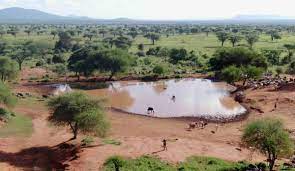World’s Rangelands : Degraded

About half of the world’s rangelands are degraded and need policy interventions, and communities depending on them need focused support, according to a new report of the United Nations Convention on Combating Desertification (UNCCD).
- Rangelands cover 80 million sq km, which is 54 per cent of the earth’s land surface.
- They are characterised by low vegetation and comprise grasslands, shrublands, wetlands, desert, semi-arid land, mountain pastures, plateaus and tundra.
- In India, rangelands occupy about 1.21 million sq km, from the Thar Desert to Himalayan meadows, as per the UNCCD report.
- The UNCCD report found that nearly 50% of the world’s rangelands can be considered “degraded” and are facing a “silent demise”.
- Climate change, unsustainable land and livestock management practices, biodiversity loss, and the conversion of rangelands to farmlands are some of the primary drivers of rangeland degradation. Uncertainty over land rights among pastoralist communities also leads to their degradation.
- This, in turn, severely affects the communities dependent on rangelands as their deterioration impacts soil fertility and biodiversity, leading to a dip in incomes and rise in conflicts with authorities over grazing rights
Rangelands:
- The UNCCD report defines rangelands as natural or semi-natural ecosystems that are grazed by livestock or wild animals.
- Rangelands contain vegetation such as grasses, shrubs, bushes, open forests, and agroforestry systems (land which contains trees and crops or pastures).
- The exact nature of rangelands’ vegetation is influenced by rainfall, temperature, and other climate phenomena.
- Currently, rangelands cover 80 million sq km of Earth’s terrestrial surface area (over half of Earth’s land), and are thus the largest land cover or land use type in the world, the UNCCD report said.
- They act as carbon sinks (which absorb more carbon from the atmosphere than they release), storehouses of freshwater, and prevent desertification of land. Millions of people worldwide depend on rangelands for food security, and livelihoods.
- Rangelands generate 16% of global food production and 70% of feed for domesticated herbivores, most significantly in Africa and South America,” the UNCCD report stated.




